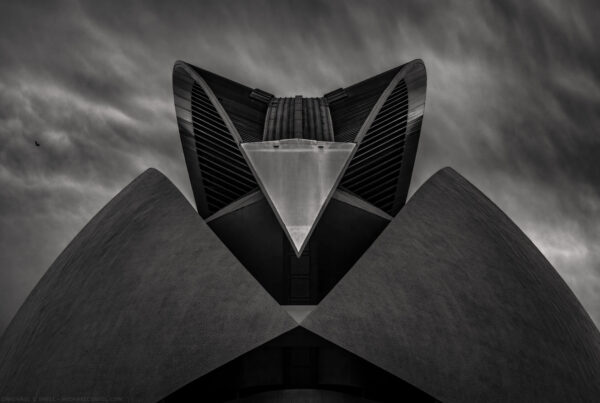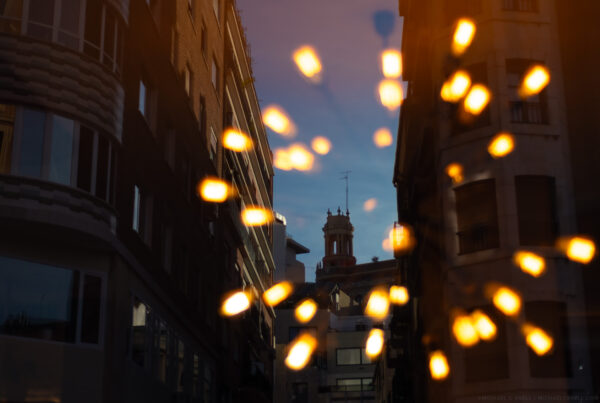Some photographers are drawn to the aesthetic and experience of shooting film.
I’ll stick with digital, thanks.
Ireland on film — October 2002.
While digitizing some old transparencies I had taken in Ireland, I was reminded of that last international trip I took with film over 20 years ago. There’s a lot of nostalgia for film today, but I can’t say that I’ve missed it much. Note: all photos in this post are digitized 35mm film shots from that 2002 trip.
I loved film at the time, but I didn’t know anything else. There was no digital option when I started shooting professionally. With the right film and the right lab to process it, film could be wondrous. But things didn’t always go right, and it wasn’t always easy.
In the travel photography world, especially, there were challenges. First, what film do you take and how much? You would likely need different film for different situations. Maybe a low-ISO Velvia for outdoor shooting, a tungsten-balanced film for interiors and a couple of high-ISO options for darker situations. Maybe you want something for a special effect, too. An infrared, black and white or a grainy Agfa film. You needed to decide before you left, because odds are you couldn’t find film once you were on the road. Many consumer shops only carried negative film but, for publication, photo editors expected transparencies.
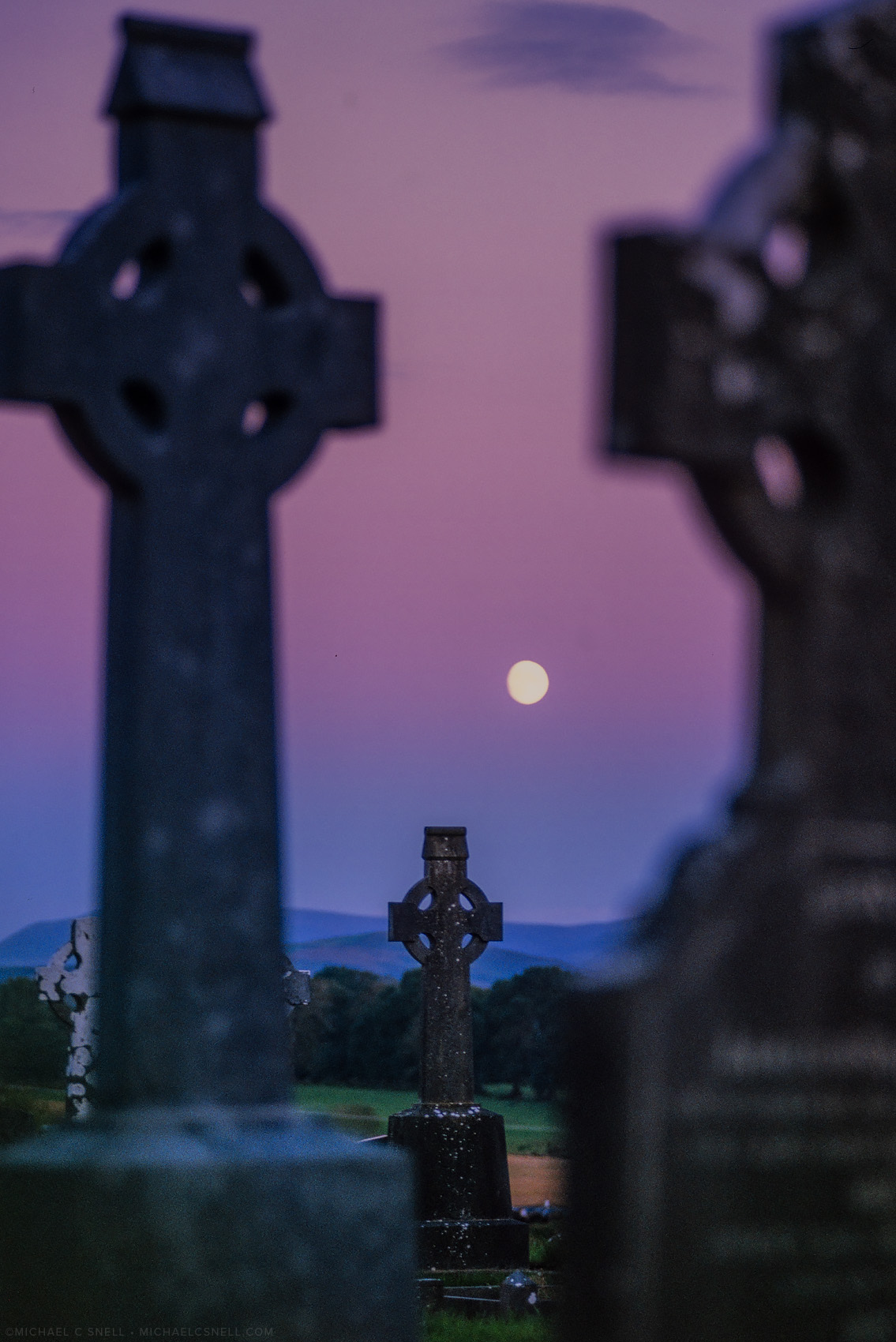
Traveling with film.
How much film, and which films, impacted your transportation as well. When flying, you didn’t want to put film in checked bags where it might get x-rayed. Even when taking it carry-on, you always had to request a hand check rather than running your film through the x-ray machine. Sometimes that was handled graciously and other times it would grudgingly be done by hand-swiping every single canister of film. It could take some time and make you very unpopular in the security line. Infrared film, which had to be loaded into cameras in a dark bag, could not be removed from the canisters or you would risk light leaks. That was always a fun explanation to the security agent.
There are conflicting opinions on how much x-rays could affect your film, but it is generally agreed that the risk is worse with higher ISO film. Considering that film is a singular thing and you have no back-up, I never wanted to risk x-rays at all, if possible.
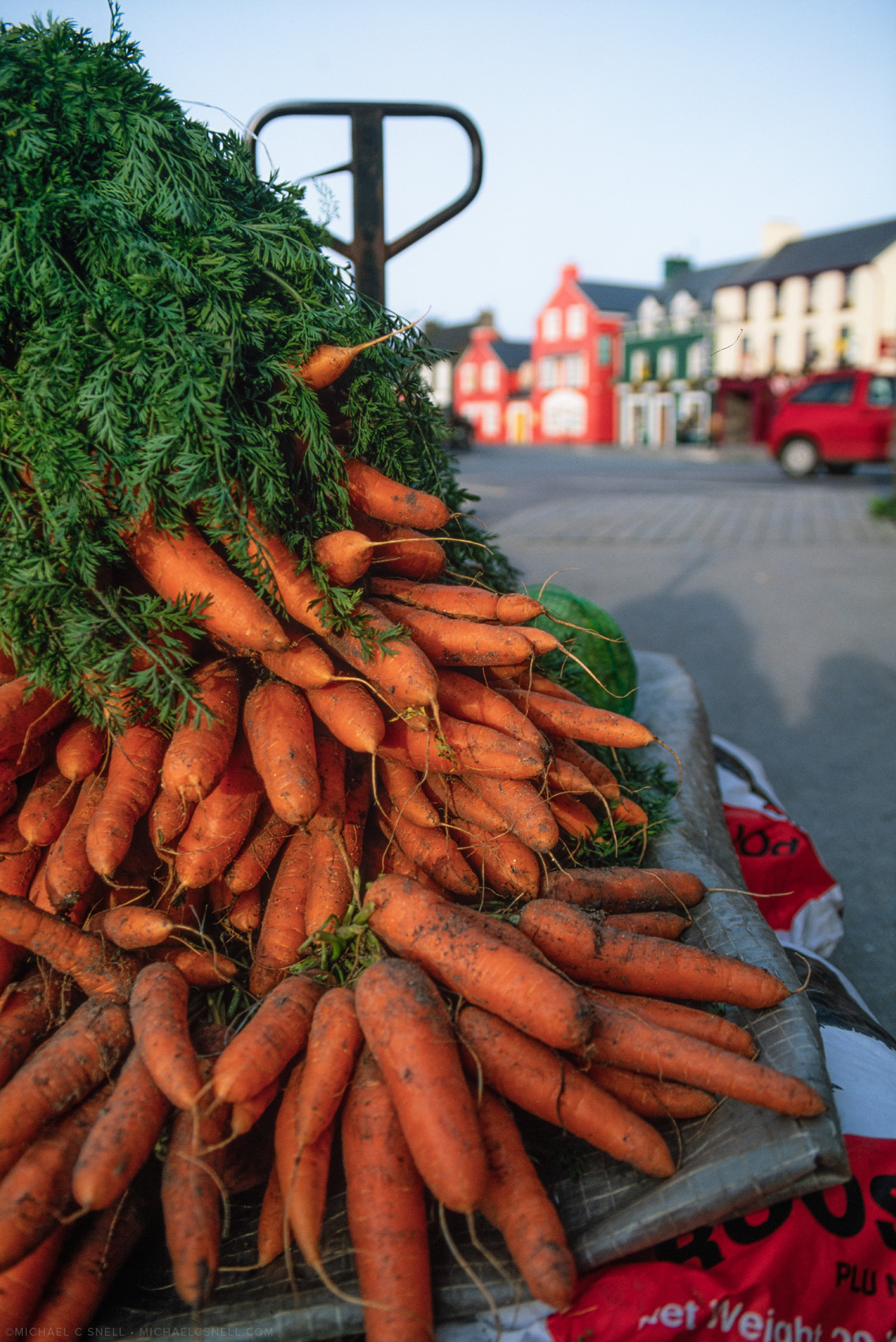
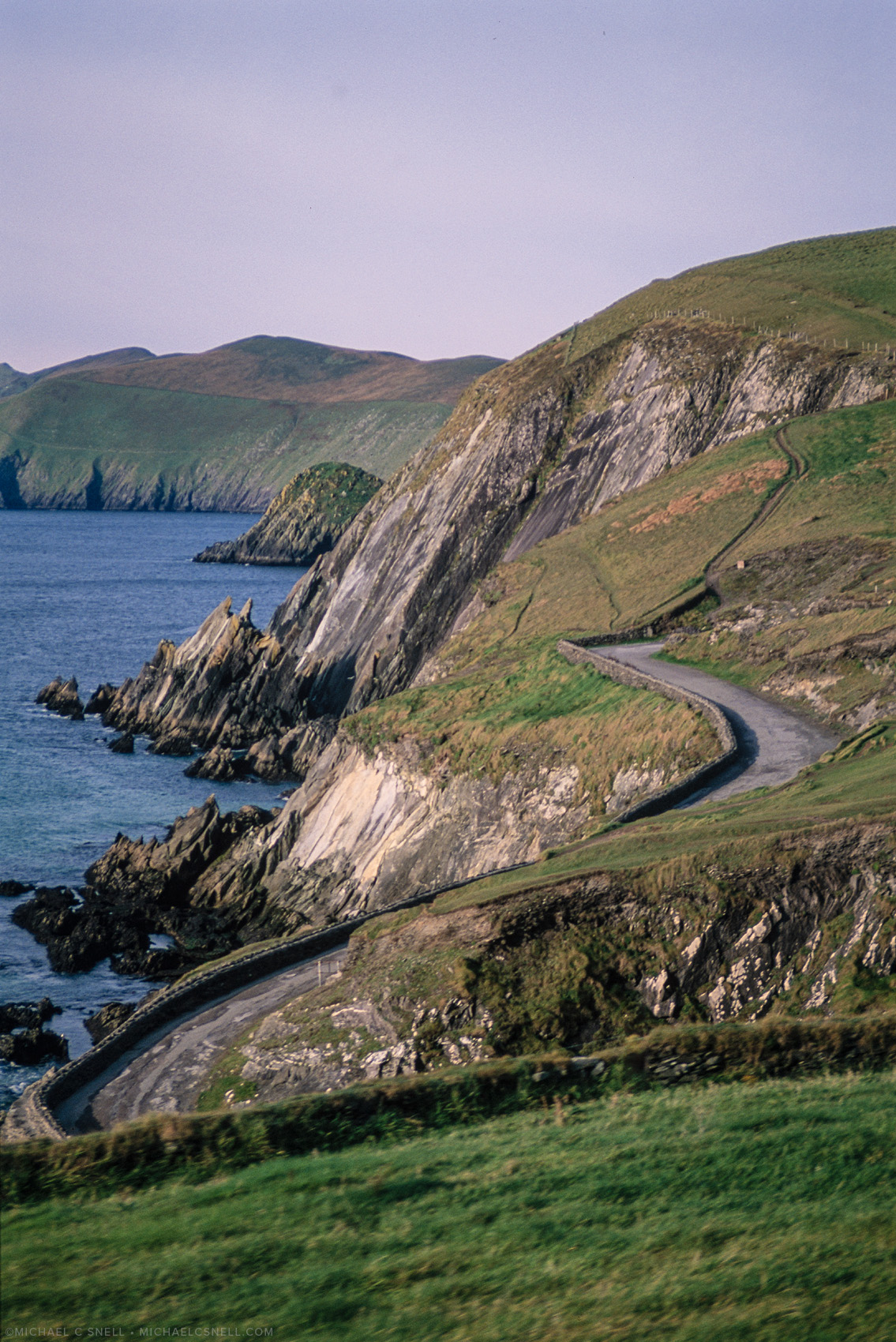
I can’t recall for certain, but I think I went to Ireland with 200 or 250 rolls of film. That’s pretty much a carry-on bag right there.
Once you’re on location, you have to think about rationing your shots. You have 36 shots per roll — 37 if you’re thrifty when you load — and a finite number of rolls. If you choose to bracket, you burn through a roll in just a handful of compositions. In this day of digital it’s almost terrifying to think what we routinely did “back in the film days.” You had no preview on the back of your camera. You had to just be confident that you’d gotten the shot, but you wouldn’t really know until your film came back from the lab. A lot of the pros I knew back in the day would actually send a test roll or two back to their lab early in the trip, just so that the techs could tell them if they were having trouble with a shutter or there was some other exposure concern. Pressure plates could scratch film as it was advanced as well. There were a lot of mechanical failure points you had to watch out for.
No back-ups — cross your fingers!
There were no back-ups, either. Now I travel with at least three hard drives — one in my laptop and two portables. Every night I back up my cards to all three hard drives, just in case. With film I typically didn’t send it to the lab until I was home. That meant taking film through airport security again — after it had been exposed. A good lab made a world of difference in your results as well, and my lab was not local. That meant trusting your one-of-a-kind film to a delivery service to get it to — and from — the lab. I only ever lost one roll of film in transport and, luckily, it was a test roll I had shot with a new-to-me medium format body. That one time was enough to cause me angst every time I shipped film again.
You could shoot in-camera back-ups, but that cut into the number of shots you had available on a trip. The alternative was to get your selects duped later, but the quality wasn’t as good as the original. My work-around was to dupe 35mm film up to 70mm. That had the advantage of being acceptable to calendar publishers who normally shied away from the small 35mm transparencies.
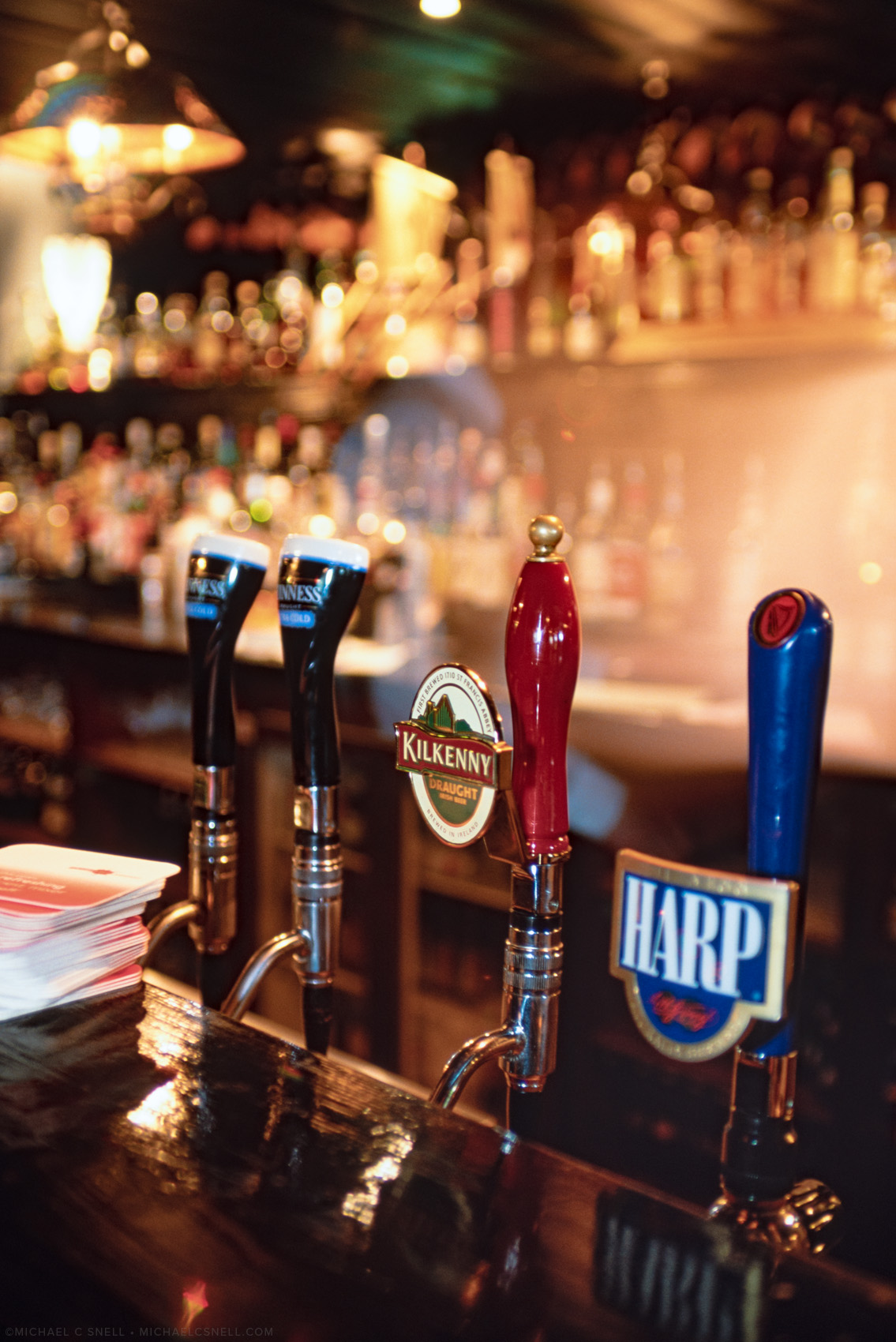
More choices and options with digital.
With digital, I’m happy to have all of the control that I used to hand over to the lab, and the film manufacturer, for that matter. Your choice in film would affect color reproduction, contrast, grain, etc. Your lab could also play a part in these elements if their chemicals weren’t fresh or temperatures were off.
I’m much happier having control over all of these elements AFTER I’ve taken the photo now. I can decide once I’m home if I’d like that image to be warmer or cooler, have more contrast or color punch, or even be black and white. And on location I’m happy not to be worried about what film is currently loaded in my camera. The pub photo above is a good example. I’d been photographing outside all day and just quickly popped into this pub and grabbed a few inside shots there. At the time, I had to make a decision — take those indoor photos with the outdoor film I had loaded and maybe use a filter to compensate, or abandon the rest of that roll to reload with a higher ISO tungsten film and be locked into that for 36 exposures.
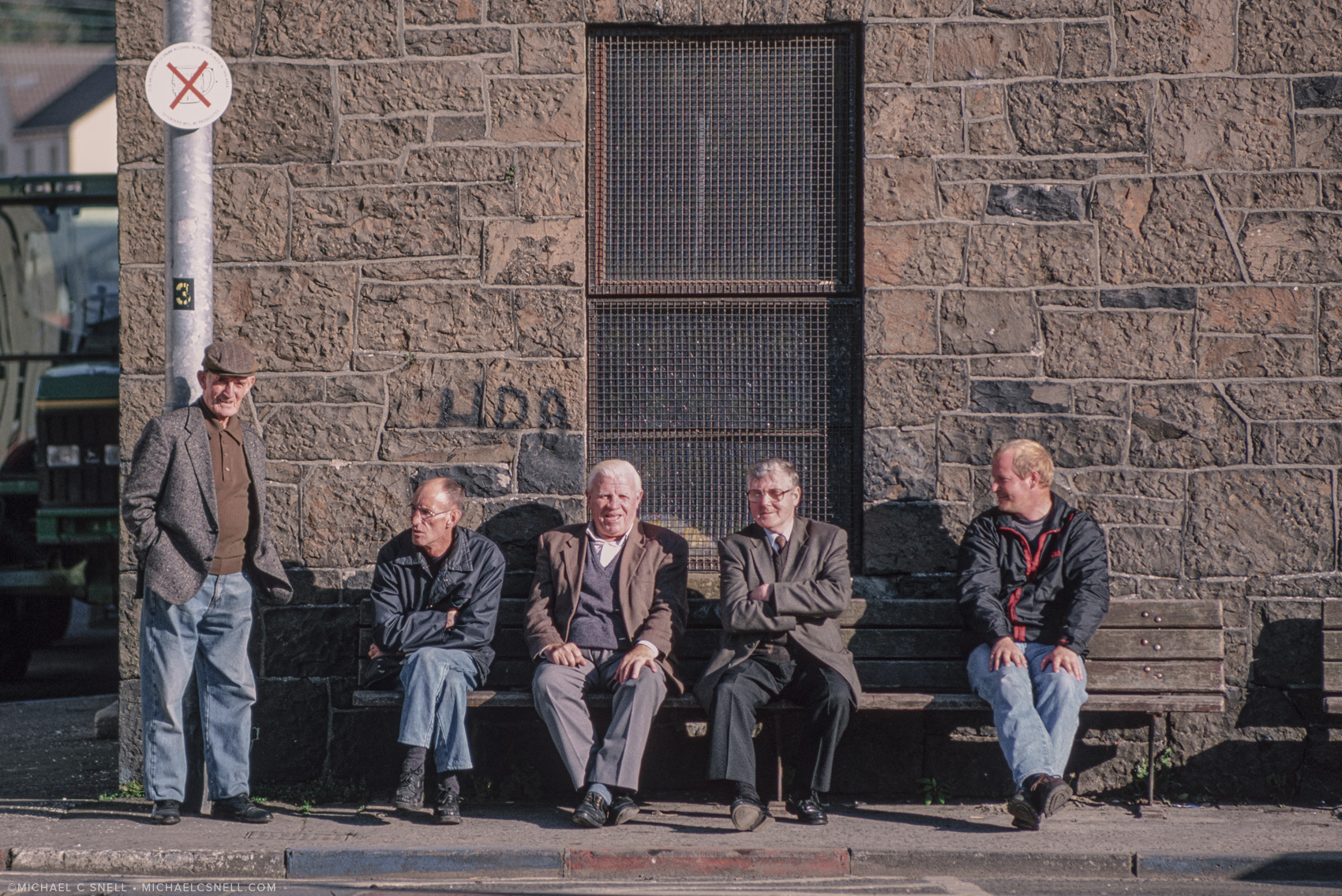
35mm film never felt quite like it was “enough.”
With film I was constantly feeling like I should step up to larger formats to get better image quality. I tried medium format and 4×5 but found them cumbersome and expensive. I loved the look of my 4×5 transparencies, but I could shoot a whole roll of options on 35mm in the time it took me to set up a single 4×5 shot and it was costing me $8-10 dollars per frame by the time you added up film and processing costs for large format.
Things I like about digital:
- No 36 exposure per-roll limitations
- Choices can be made later regarding white balance, contrast, saturation, etc.
- Much more latitude for shooting high-contrast situations
- No grain
- Can be backed up as necessary, even when traveling or in-camera
- Endless dupes with no image degradation
- Ability to try different processing looks after the fact – not being stuck with choices made at the time of shooting
- Ease of travel – cameras and cards can go right through the airport scanners
- Metadata – the ability to see the date and time the photo was made, the settings, the equipment used and so on
- Lastly, I can say that — from my experience — the 48mp bodies I’m shooting with now surpass the detail available in 35mm film and are possibly equal to, or surpassing, that of medium format
In summary
So, if you like the look of film, I would suggest learning how to mimic that in your post-processing or shoot with a digital that has film simulation modes. But shoot in RAW to have the advantage of changing your mind later. You can also take advantage of software advancements down the road to better remove noise, or make other alterations to your post-processing.
I’m happy that film is still around for those who really want to use it, but I’ll stick with my digital. I really don’t miss my film days at all. I do, however, miss all of the tilt-shift adjustments of my old 4×5…
